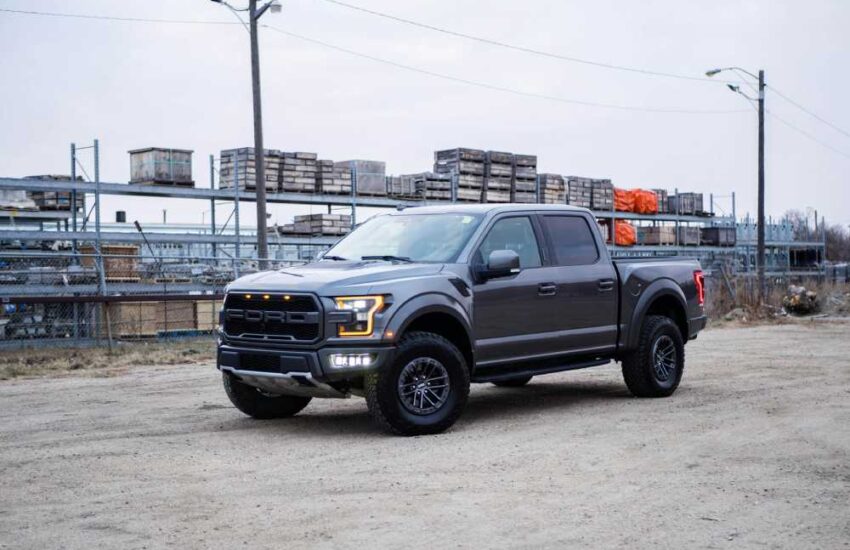Best Car to Rent in Australia: Top Picks for Your Travel Needs
Selecting the best car to rent in Australia hinges on a few key considerations, such as the nature of the journey, the number of travellers, and personal preferences in terms of performance and comfort.
Car hire companies across Australia like https://www.eastcoastcarrentals.com.au/ offer a diverse fleet to cater to various requirements, from solo adventurers in need of compact models to families or groups requiring more spacious vehicles.
With competitive prices and a wide range of options, travellers can find a vehicle that best suits their needs while staying within budget.

When considering car hire in Australia, it’s essential to look for value for money and customer satisfaction. Hertz, for example, has received high ratings in customer reviews for its comprehensive range of vehicles and excellent customer service.
Beyond the brand, factors like cost transparency, availability, and quality of the vehicle are important to ensure a smooth rental experience.
Travellers should compare different rental services to find the most cost-effective and convenient option. Whether renting a car from the airport or from a city centre, price comparison tools can help in finding attractive deals.
Additionally, renting for longer periods often yields better rates, and sharing the cost with friends or family can make the journey more affordable. It’s also advisable to consider insurance options, such as the Collision Damage Waiver (CDW) and theft protection, which can provide peace of mind during travel.
Choosing the Right Car for Your Australian Adventure
When planning a road trip across Australia, selecting an appropriate vehicle is critical for both comfort and practicality.
Evaluating Car Types and Models
In choosing a vehicle, one must consider the type and model that best suits the journey. Economy cars are cost-effective and fuel-efficient, suitable for city trips or short excursions. Compact cars, slightly larger, offer a balance between economy and comfort.
For those needing more space, intermediate cars provide additional room for passengers and luggage. Full-size cars and premium SUVs cater to travellers looking for luxury and space, often equipped with advanced features. Large groups might opt for passenger vans to travel together.
Here’s a brief rundown of car types:
- Economy: Affordable, best for city travel and short distances.
- Compact: Balance between cost and comfort, ideal for small groups.
- Intermediate: Spacious for luggage, good for longer journeys.
- Full-size: Maximum comfort and features, suited for long distances.
- Premium SUV: High-end features, robust for varied terrains.
- Passenger Van: Perfect for large groups or families.
Understanding Car Hire Terms and Conditions
The terms and conditions of car hire in Australia are crucial for a hassle-free rental experience. They cover insurance options, mileage limits, fuel policies, and additional fees. Customers should be aware of the possibilities of additional charges for drivers under a certain age or for adding extra drivers to the contract.
It’s advisable to check if the price includes compulsory insurances like Third Party Liability, which is essential for driving in Australia. Understanding these terms helps in avoiding unexpected expenses and ensures one selects the right vehicle that complies with their rental agreement.
Understanding Rental Costs and Policies
When renting a car in Australia, it is essential to be well-informed about the cost structures and the policies that govern car rentals. Specific considerations include age and insurance regulations, as well as understanding the full spectrum of potential fees and fines.
Age, Additional Driver, and Insurance Considerations
In Australia, renters must typically be at least 21 years old, although this can vary by rental company. An ‘underage surcharge’ may apply to drivers under 25. Adding an additional driver often incurs extra costs, and they must meet the same age requirements and provide valid driving credentials.
Insurance is a critical aspect, with options like Collision Damage Waiver (CDW) and Third-Party Liability insurance. These are often included in the rental fee, but it is crucial to confirm what’s covered and consider additional coverage for full protection.
Navigating Fees, Charges, and Cancellation Policies
Rental Rates can vary significantly based on factors like car size, location, and rental duration. Special equipment such as GPS units often come with extra charges, and it is important to verify these.
- Cancellation Policies: Many companies offer free cancellation up to a certain date, but fees may apply if you cancel past this point.
- Hidden Charges: Always review the agreement for administrative fees, refuelling charges, or other potential hidden costs.
Be sure to inquire about all aspects of the contract to avoid unexpected charges during your car rental experience in Australia.
Best Car Hire Locations and Tips for Travel
When planning a road trip in Australia, it’s crucial to choose the right car hire location and be aware of the necessary considerations for a smooth journey.
Popular Destinations and Route Suggestions
Melbourne, Victoria: Known for its art scene and culinary delights, starting a road trip here can lead you to the Great Ocean Road, famous for its scenic ocean views.
- Route: Melbourne to Adelaide via the Great Ocean Road.
Brisbane, Queensland: Ideal for those looking to explore the lush landscapes of the Sunshine Coast and the Gold Coast’s beautiful beaches.
- Route: Brisbane to Cairns, passing through beach towns and the edge of the Outback region.
Sydney, New South Wales: Sydney offers routes to the Hunter Valley wine region or down the coastline to the nation’s capital, Canberra.
- Route: Sydney to Canberra, through the Southern Highlands.
Perth, Western Australia: The gateway to Western Australia’s diverse landscapes, with access to the Margaret River wine region and remote Outback towns.
- Route: Perth to Broome, exploring the untamed wilderness of the Kimberley.
Hobart, Tasmania: A start point for the exploration of Tasmania’s rugged terrain and historic sites.
- Route: A circular trip around Tasmania, starting and ending in Hobart.
Adelaide, South Australia: The starting point for trips to the wine regions of Barossa Valley or the wildlife haven of Kangaroo Island.
- Route: Adelaide to the Flinders Ranges through wine country.
Cairns, Queensland: Cairns acts as a hub for those wishing to experience the Great Barrier Reef or the Daintree Rainforest.
- Route: Cairns to Cape Tribulation, with stops at beaches and rainforests.
Tips for a Safe and Enjoyable Road Trip
- Multiple Drivers: It is recommended that multiple drivers share the driving responsibilities to avoid fatigue, especially on long, rural routes.
- Children: Ensure that all underage children have the appropriate car seats, as per Australian road safety regulations.
- Car Hire Locations: Major cities such as Sydney, Melbourne, and Brisbane offer numerous pick-up points; using travel sites can help secure the best rates.
- Speed Limits: Speed limits vary throughout Australia, typically 50-70 km/h in urban areas and 100-110 km/h on highways and open roads.
- Outback Precautions: When driving in the Outback, make sure the vehicle is suitable for rugged conditions, and prepare for long distances between services.
- Toll Stops: Several major cities have toll roads; it’s best to arrange an electronic pass with the car hire company.
- Navigation: Use GPS and carry updated maps, especially when travelling in remote areas where signal may be weak.


